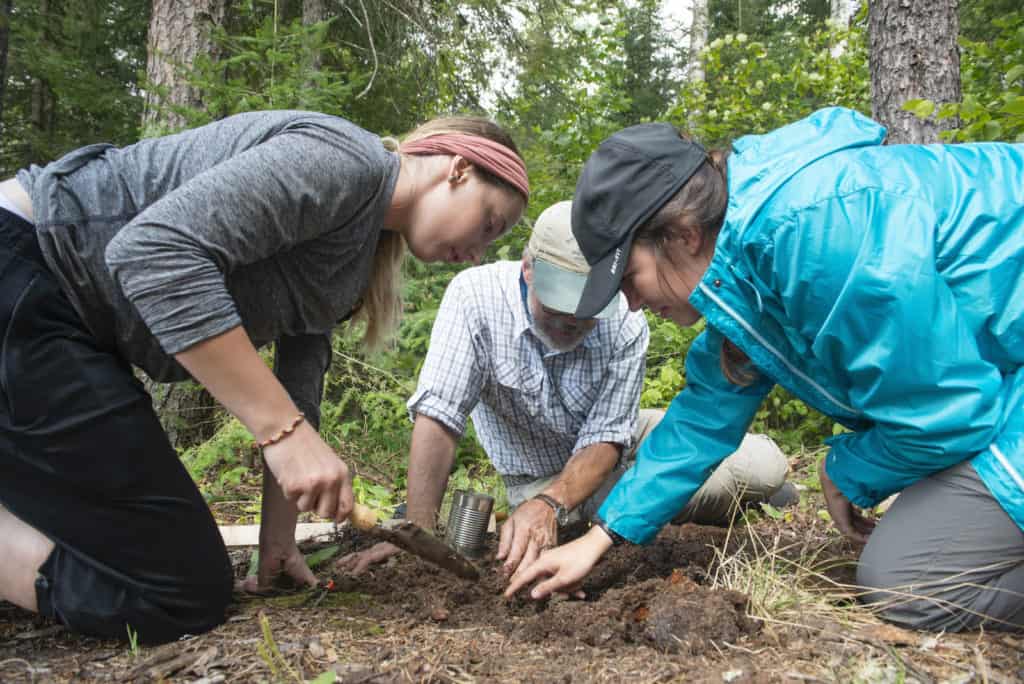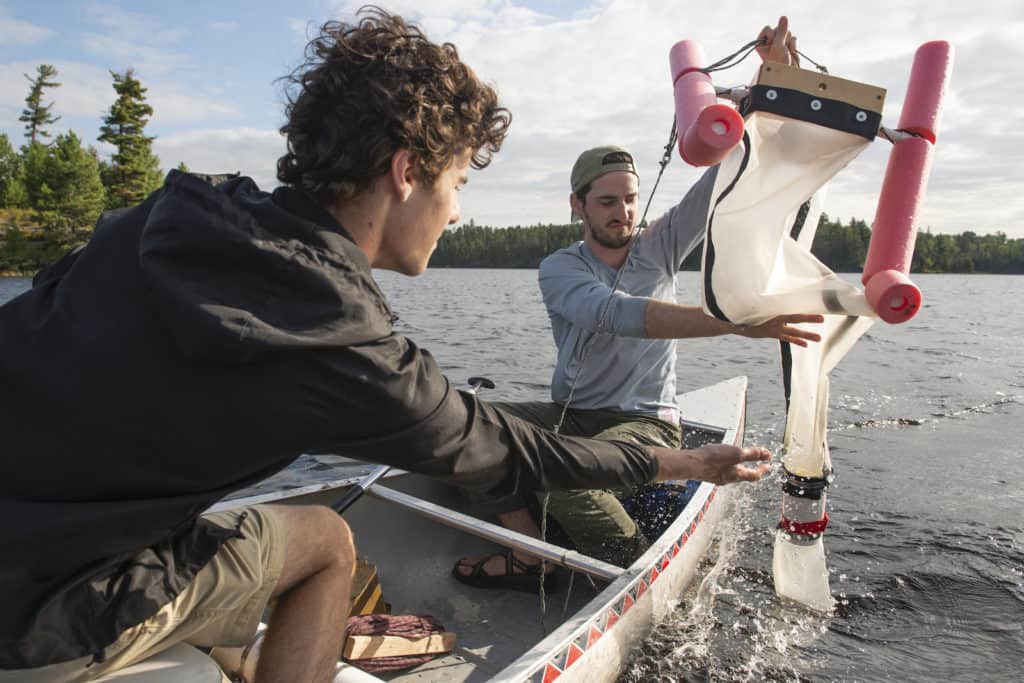
A research team from the University of Wisconsin-Eau Claire has found abundant plastic particles in samples taken at several sites in the Boundary Waters Canoe Area Wilderness. A professor and four undergraduate students took two trips into the wilderness this summer, collecting earthworms, soil, water, and crayfish for analysis.
Microplastics, which are generally too small to be seen with the naked eye, can come from a variety of sources, including synthetic clothing and plastic items that break down into the tiny pieces. Their presence raises concerns about how plastic might enter the food chain, affecting fish, birds, and other wildlife.
While microplastics have been a growing concern due to being found in oceans, rivers, and other aquatic environments, research on this issue in the Boundary Waters is relatively new.
“We’re finding microplastics in the Boundary Waters and that’s a big deal,” says Dr. Todd Wellnitz, a professor of biology, in a story published by the university. “No place is pristine now; microplastics are everywhere. It’s all over the planet and we’re just realizing it.”
Questions remain about how the plastics end up in the Boundary Waters — they can be carried by wind and rain, or they can come from wilderness visitors. Microplastics can come from clothing, blankets, tarps and other items people bring into the Boundary Waters.
One finding points to the possibility that visitors are the primary source: microplastics were most abundant at the campsite the team sampled closest to the wilderness entry point.

The team conducted their study in June and August. On the first trip, they collected earthworms, the non-native species that have been introduced by anglers who dump out bait. The worms consume leaf litter and other material in and on the soil — making it easy for them to ingest plastics.
“We found 80 pieces of microplastics in one earthworm that we examined,” Wellnitz said. “That blew me away.”
Worms are also eaten by birds and other animals, raising the possibility that they could be accumulating plastics in their bodies, too. Plastic can accumulate other toxins, like DDT and PCB, and contain endocrine-disrupting chemicals that hurt living things. The plastic can also irritate the stomach and intestines, and other organs if the plastics enter the bloodstream.
“We know that earthworms do consume microplastics,” Reed Kostelny, a junior environmental biology major, said. “Now that we have our early data, we want to know more about the worms and how the microplastics could move up the food chain.”
On the second trip, in August, the researchers expanded their effort to include water, soil, and crayfish. Analysis of the samples is ongoing. The undergraduate students participating in the project will also give talks in area schools, present their research at meetings and conferences, and submit papers to professional science journals.
“It’s not surprising that it’s up there but it’s still sad,” said Thomas Adams, a senior environmental biology major. “It’s humbling to think about the impact we have on other life. The more attention we can give to what our impact has on someplace like the Boundary Waters, the more we can help people understand that they need to step back and think about what we’re doing.”
Research on the effects of microplastics on animal and human health is still ongoing as the issues emerges as one of concern. A peer-reviewed study in March found that fish exposed to microplastics have lower rates of reproduction.
More information:

